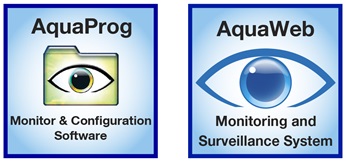GSM-4G Modem type CA 524
Quality 4G modem for Sulzer controllers
The CA 524 is a 4G modem suitable for use with all Sulzer controllers equipped with RS 232 modem communication. The modem kit comes complete with modem, dipole type T antenna, power cable and a DIN-rail socket. Diodes for indication of power and network status.
- External antenna
- 4G twelve band LTE
- 3G seven band UMTS
- 2G quad band GSM
- Plug & play with Sulzer controllers
- Separate tape mounted aerial
- Approvals: CE, UL
- Antennas of desired type can be used and placed at optional point
| Ambient operating temperature |
-30 to +65 ºC (-22 to +149 ºF) |
| Mounting |
DIN rail 35 mm |
| Degree of protection |
IP 20, NEMA: Type 1 |
| Housing material |
PPO and PC |
| Dimension H x W x D |
115 x 86 x 26 mm (4.53 x 3.39 x 1.03 inch) |
| Humidity |
0-95 % RH non condensing |
| Power supply |
10 – 30 VDC |
| RS 232 serial interface |
One |
| Antenna contact |
SMA-F |
Mounting of DIN-rail holder
The power network in London is almost exclusively underground and serves some of the most sensitive locations in the UK. Sulzer provided power generation company a monitoring and drainage pump solution for managing the risk in case of a flood.
Wherever fluids are pumped, mixed, controlled or applied, we are there. See how our solutions create value for customers and learn how we can make your pumping and mixing processes more efficient and profitable, safeguarding your production and ensuring lasting reliability.
Commercial wastewater from toilets comprises all sewage water flushed from toilets on commercial, industrial or public properties.
Commercial wastewater without toilet waste includes drainage and grey wastewater.
Climate change is challenging natural disaster prevention. When water runs off the land in large quantities, Sulzer’s comprehensive range of pumps provide reliable, cost effective and efficient solutions for flood control.
Inlet pumping stations are somewhat similar to large terminal pumping stations. Depending on the depth of the incoming sewer, the lifting heads can range from around 2 up to 30 meters. To prevent hydraulic shock loads, which negatively impact the biological process, the stations often make use of variable-speed drives and/or several pumps in parallel.
Network pumping stations collect municipal wastewater from residential homes and communal schemes. Installed in dry or wet wells, the pumps deliver the effluent to a terminal pumping station. Since most pumping stations are not equipped with screens, the pumps must cope with difficult materials such as fibrous sanitary and packaging items.
Outlet pumping stations are required when the level of the treatment plant is lower than that of the receiving water. This is especially true when discharging into a river, which can rise during heavy rain or flood periods, or into the sea, where the level varies with the tide. Outlet pumping stations may also be needed to compensate for increasing frictional losses in the outgoing pipe at high flows, for example in long sea outfall pipes.
During heavy rainfall, storm water pumping stations deliver large volumes of water at low head to receiving surface waters or sewers. Having long been a part of flood management, they are increasingly involved in climate adaptation strategies for low-lying coastal cities.
Storm water retention tanks act as a buffer during periods of heavy rainfall. This is increasingly important as areas become more developed, with hard surfaces such as roofs, roads and parking lots that cannot absorb the rainwater. When storm water retention tanks are implemented, gravity or pumps can be utilized to provide a reduced continuous flow into the sewer system. Sulzer expertise makes it possible to avoid peak hydraulic loads and to limit the stresses on existing sewer systems.
Terminal pumping stations receive municipal wastewater from network pumping stations. Installed in dry or wet wells, the pumps forward the medium to a treatment plant for final purification. Due to the lack of screens at most pumping stations, difficult materials such as fibrous sanitary and packaging items are a constant threat to uptime.


